Genus MacadamiaF.Muell. | ||
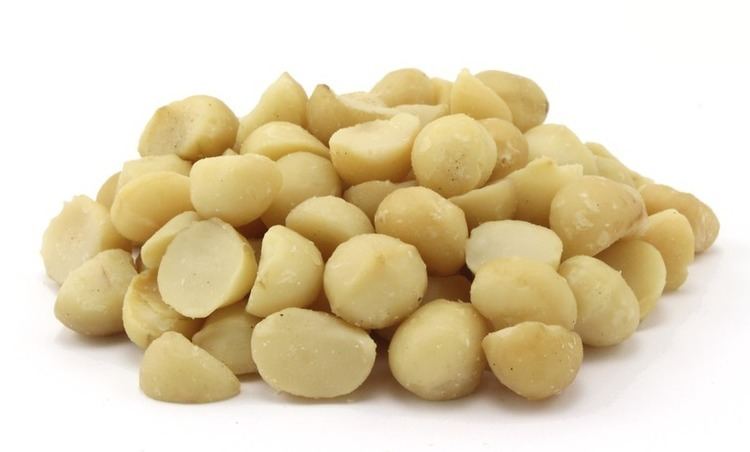 | ||
Similar Nut, Pecan, Brazil nut, Cashew, Hazelnut | ||
Why eat macadamia nuts
Macadamia is a genus of four species of trees indigenous to Australia and constituting part of the plant family Proteaceae. They are native to north eastern New South Wales and central and south eastern Queensland. The tree is commercially important for its fruit, the macadamia nuts /ˌmækəˈdeɪmiə/ (or simply "macadamia"). Other names include Queensland nut, bush nut, maroochi nut, bauple nut, and Hawaii nut. In Australian Aboriginal languages, the fruit is known by names such as bauple, gyndl, jindilli, and boombera. Previously, more species with disjunct distributions were named as members of this genus Macadamia. Genetics and morphological studies more recently published in 2008 show they have separated from the genus Macadamia, correlating less closely than thought from earlier morphological studies. The species previously named in the Macadamia genus may still be referred to overall by the descriptive, non-scientific name of macadamia; their disjunct distributions and current scientific names are:
Contents
- Why eat macadamia nuts
- 10 health benefits of macadamia nuts
- History
- Species
- Cultivation
- Beaumont
- Maroochy
- Nelmac II
- Renown
- Production
- Food and nutrition
- Toxicity in dogs
- Other uses
- References
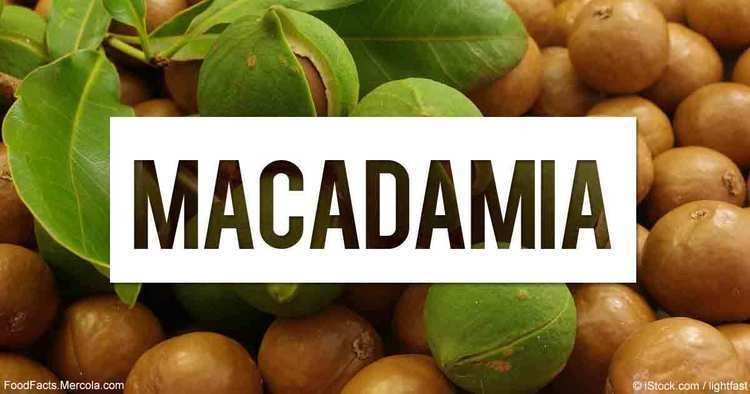
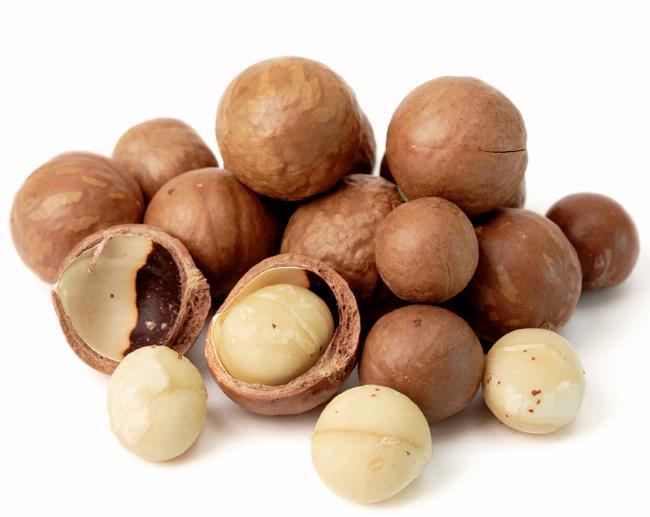
Macadamia is an evergreen species that grows 2–12 m (7–40 ft) tall. The leaves are arranged in whorls of three to six, lanceolate to obovate or elliptic in shape, 6–30 cm (2–10 in) long and 3–13 cm (1–5 in) broad, with an entire or spiny-serrated margin. The flowers are produced in a long, slender, simple raceme 5–30 cm (2–10 in) long, the individual flowers 10–15 mm (0.4–0.6 in) long, white to pink or purple, with four tepals. The fruit is a very hard, woody, globose follicle with a pointed apex, containing one or two seeds.
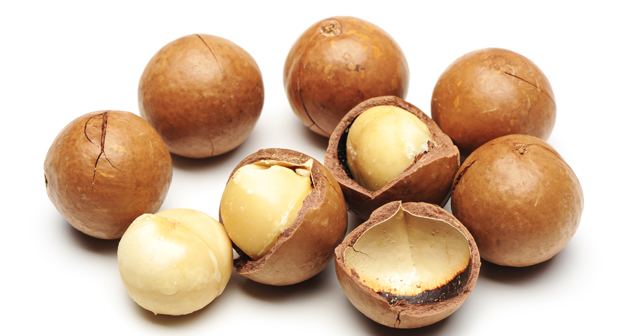
The German–Australian botanist Ferdinand von Mueller gave the genus the name Macadamia in 1857 in honor of the Scottish-Australian chemist, medical teacher and politician John Macadam.
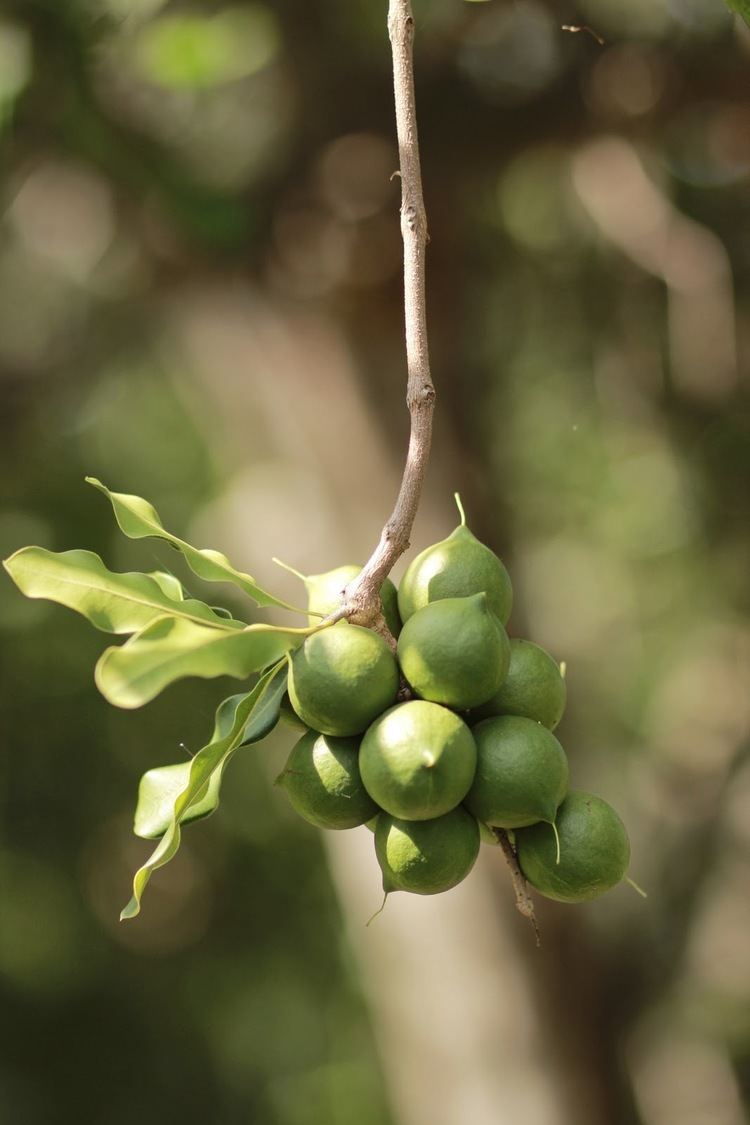
10 health benefits of macadamia nuts
History
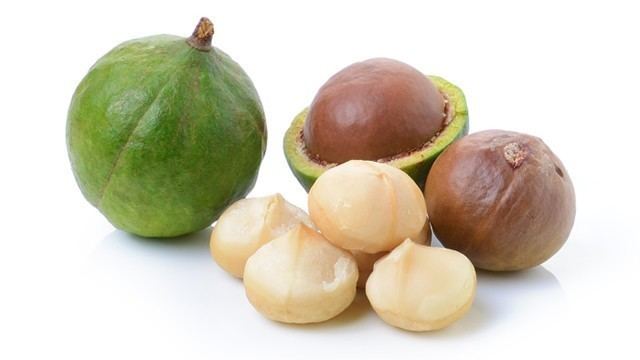
Species
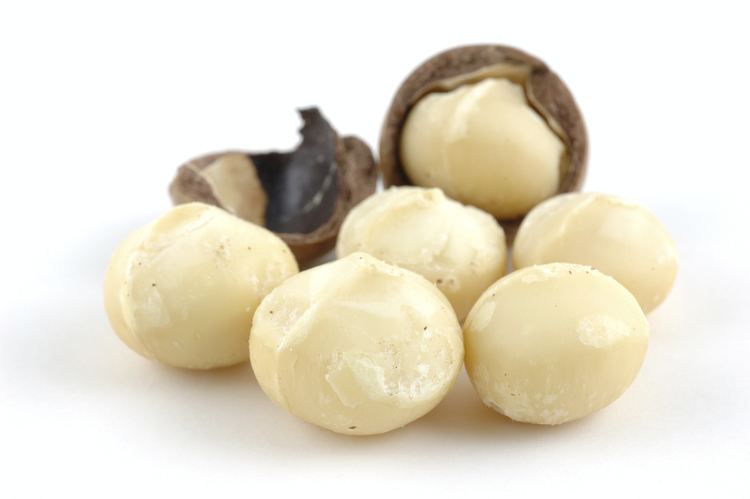
Cultivation
The macadamia tree is usually propagated by grafting, and does not begin to produce commercial quantities of seeds until it is 7–10 years old, but once established, may continue bearing for over 100 years. Macadamias prefer fertile, well-drained soils, a rainfall of 1,000–2,000 mm (40–80 in), and temperatures not falling below 10 °C (50 °F) (although once established, they can withstand light frosts), with an optimum temperature of 25 °C (80 °F). The roots are shallow and trees can be blown down in storms; they are also susceptible to Phytophthora root disease.
Beaumont
A Macadamia integrifolia / M. tetraphylla hybrid commercial variety is widely planted in Australia and New Zealand; it was discovered by Dr. J. H. Beaumont. It is high in oil, but is not sweet. New leaves are reddish, flowers are bright pink, borne on long racemes. It is one of the quickest varieties to come into bearing once planted in the garden, usually carrying a useful crop by the fourth year, and improving from then on. It crops prodigiously when well pollinated. The impressive, grape-like clusters are sometimes so heavy they break the branchlet to which they are attached. In commercial orchards, it has reached 18 kg (40 lb) per tree by eight years old. On the downside, the macadamias do not drop from the tree when ripe, and the leaves are a bit prickly when one reaches into the interior of the tree during harvest. Its shell is easier to open than that of most commercial varieties.
Maroochy
A pure M. tetraphylla variety from Australia, this strain is cultivated for its productive crop yield, flavor, and suitability for pollinating 'Beaumont'.
Nelmac II
A South African M. integrifolia / M. tetraphylla hybrid cultivar, it has a sweet seed, which means it has to be cooked carefully so that the sugars do not caramelise. The sweet seed is usually not fully processed, as it generally doesn't taste as good, but many people enjoy eating it uncooked. It has an open micropyle (hole in the shell) which may let in mould. The crack-out percentage is high. Ten-year-old trees average 22 kg (50 lb) per tree. It is a popular variety because of its pollination of 'Beaumont', and the yields are almost comparable.
Renown
A M. integrifolia / M. tetraphylla hybrid, this is a rather spreading tree. On the plus side, it is high yielding—commercially, 17 kg (37 lb) from a 9-year-old tree has been recorded—and the nuts drop to the ground. However they are thick-shelled, with not much flavor.
Production
In 2015, South Africa was the world's leading producer of macadamia nuts with 48,000 tonnes (53,000 short tons) compared to Australia's 40,000 tonnes and the total global production of 160,000 tonnes (180,000 short tons). Macadamia is also commercially produced in Brazil, California, Costa Rica, Israel, Kenya, Bolivia, New Zealand, Colombia, Guatemala and Malawi.
The first commercial orchard of macadamia trees was planted in the early 1880s by Rous Mill, 12 km (7.5 mi) southeast of Lismore, New South Wales, consisting of M. tetraphylla. Besides the development of a small boutique industry in Australia during the late 19th and early 20th centuries, macadamia was extensively planted as a commercial crop in Hawaii from the 1920s. Macadamia seeds were first imported into Hawaii in 1882 by William H. Purvis, who planted seeds that year at Kapulena. The Hawaiian-produced macadamia established the well-known seed internationally. However, in 2006, macadamia production began to fall in Hawaii, due to lower prices from an over-supply.
Food and nutrition
The seeds (nuts) are a valuable food crop. Only three of the species, Macadamia integrifolia, Macadamia ternifolia, and Macadamia tetraphylla are of commercial importance. The remainder of the genus (M. jansenii) possesses poisonous and/or inedible seeds resulting from cyanogenic glycosides.
In a 100 gram amount, macadamia nuts provide 740 Calories and are a rich source (20% or more of the Daily Value, DV) of numerous essential nutrients, including thiamin (104% DV), vitamin B6 (21% DV), manganese (195% DV), iron (28% DV), magnesium (37% DV) and phosphorus (27% DV) (table). Macadamia nuts are 76% fat, 14% carbohydrates, including 9% dietary fiber, and 8% protein (table).
Compared with other common edible nuts, such as almonds and cashews, macadamias are high in total fat and relatively low in protein (table). They have a high amount of monounsaturated fats (59% of total content, table) and contain, as 17% of total fat, the monounsaturated fat, omega-7 palmitoleic acid.
Toxicity in dogs
Macadamias are toxic to dogs. Ingestion may result in macadamia toxicity marked by weakness and hind limb paralysis with the inability to stand, occurring within 12 hours of ingestion. Depending on the quantity ingested and size of the dog, symptoms may also include muscle tremors, joint pain and severe abdominal pain. In high doses of toxin, opiate medication may be required for symptom relief until the toxic effects diminish, with full recovery usually within 24 to 48 hours.
Other uses
The trees are also grown as ornamental plants in subtropical regions for their glossy foliage and attractive flowers. Macadamia species are used as food plants by the larvae of some Lepidoptera species, including Batrachedra arenosella.
Macadamia seeds are often fed to hyacinth macaws in captivity. These large parrots are one of the few animals, aside from humans, capable of cracking the shell and removing the seed.
